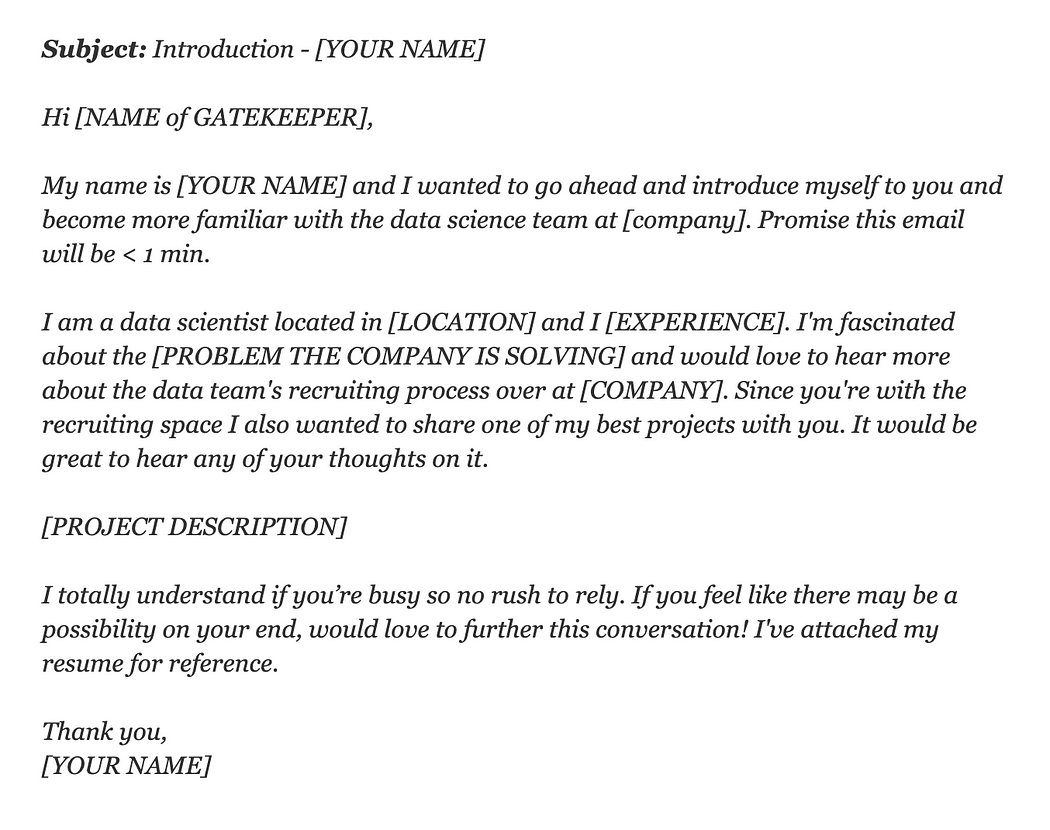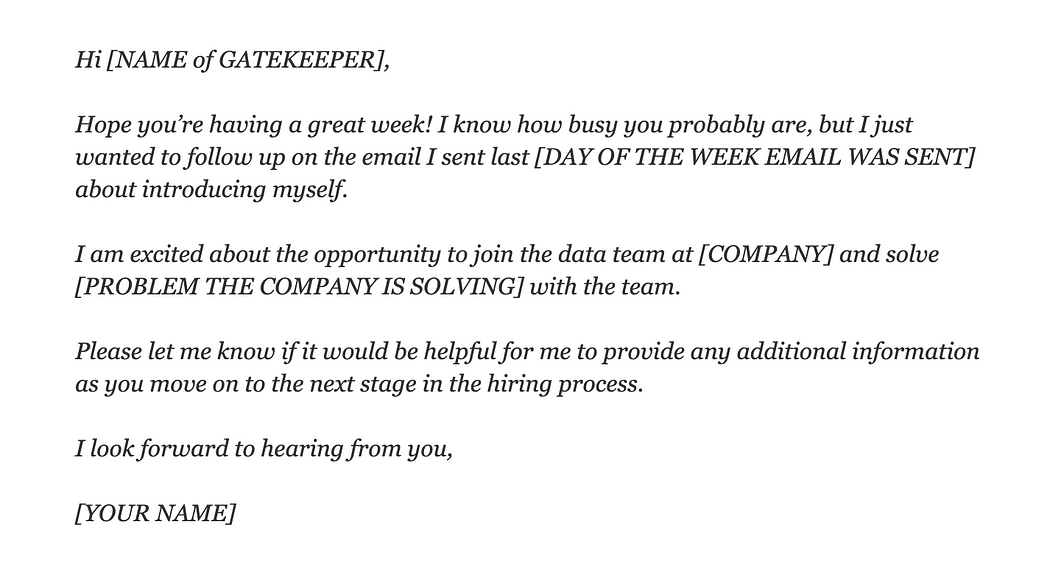How to Get Data Science Interviews: Finding Jobs, Reaching Gatekeepers, and Getting Referrals
Feb 08, 2023
If you want to get a job, first you have to get interviews. We all know that, but how exactly do you do that?
In my first job search, it took me 3 months and hundreds of applications to get my first interview.
When I got laid off in 2018, I had a very different experience. This time I got 10 interviews within a month using 50 applications and 18 referrals.
I wasn’t better qualified, but I finally understood what I didn’t the first time around - how to get interviews.
And that understanding is what I want to share in this blog. You will find strategies, scripts, and other free resources in this post which will help you be methodical and organized in your job search.
3 Approaches to Getting Interviews
There are 3 basic methods for getting interviews. Like with most things, the more effort the method requires the more effective it tends to be.

This doesn’t mean that you should just focus on referrals though. There are strategies you can use to make the most of all 3 methods.
Raw Applications
The problem with raw applications is the sheer amount of competition. If you are applying on job boards like Glassdoor, LinkedIn, or Indeed, you’re likely one of a hundred or more candidates. It’s almost impossible to stand out with that much traffic.
So how do you make raw applications work?
One method is to try less popular websites. If you are unsure about that approach I highly recommend Edouard Harris’s blog post on why “companies pay more attention to applicants who apply through less known channels.”
If you’re ready to give smaller job boards a try, here are some options (the first 7 are specific to data science):
- Kaggle Jobs
- KDNuggets Jobs
- Data Science Central — Analytic Talent (US-centric)
- DataJobs (US-centric)
- Icrunchdata (US-centric)
- r/DataScienceJobs
- TripleBytes — Data Science
- AngelList
- HackerNews
- Github Jobs
- Hired
- SmartHires
- WhiteTruffle
- ZipRecruiter
You can also make raw applications better by sending a personalized note to the person who is hiring. Personalization will greatly increase your chances of getting a response.
Still, raw applications alone are not going to get you many interviews. That’s why you also want to use the next methods to increase your chances.
Reaching Out to the Gatekeeper
A gatekeeper refers to a technical recruiter or a data scientist in the company in which you are interested in working. Winning over this person could allow you to move forward in the job hiring process.
But how do you win over a gatekeeper? Here are the steps I followed:
- Compile a list of companies.
- Find the contact info of the gatekeepers by going to the company website or using LinkedIn.
- Develop an email pitch.
- If you don’t hear back within a week or so, send a follow-up email (follow up until you get rejections).
The email pitch needs to be clear and concise. The basics are to include an intro stating your intentions and a description of an impactful project. Here’s a helpful template.

This email template has been updated from Lessons Learned the Hard Way: Hacking the Data Science Interview by Greg Kamradt
Here is my template for the follow-up email as well:

Remember NEVER to copy the template exactly. The world is small, and people will notice if you use templates. You need to change things up and personalize it.
Getting Referrals
Referrals are by far the most effective way to get interviews, but only if you know how to get them appropriately.
Referrals are getting someone familiar with your work to give a glowing recommendation to their company. They are not hassling strangers for help.
Unlike reaching out to gatekeepers, referrals start with building relationships. Building a relationship sounds like a lot, but there are actually 4 simple steps to do it:
- Buy people coffee.
- Do an informational interview (take time to learn about the person and what they do).
- Thank them the next day via email and follow-up.
- Make it a smooth referral (find the openings yourself and provide all the materials your referrer needs).
These steps led me to 18 referrals, so they are proven to work. If you are unsure how to start the process here’s the template I used for the initial outreach.

This email template has been updated from How to Break Into the Tech Industry by Haseeb Qureshi.
Those are the 3 ways to approach getting interviews, but all of those ways will require you to submit a resume at some point, so now let’s talk about what you can do to make sure your resume stands out.
Qualities of a Great Resume
Crafting a fantastic resume can be tricky. You need to showcase what you can do while at the same time being brief.
Through my own experience with job searching, talking to many recruiters and hiring managers, and reviewing other people’s resumes, here are the rules I have developed for fine-tuning your resume:
- Keep it to one page. Always.
- Don’t have typos. Proofread carefully.
- Be selective and curated (start with their highest impact stuff and limit yourself to what’s relevant).
- Be concise and clear.
- Don’t tell. Show the numbers and metrics.
- Customize your resume for different positions.
These 6 rules can help you give your resume that extra edge to stand out and land an interview.
In Conclusion…
Getting interviews is tricky and often involves some failure. However, if all you’ve been doing is submitting hundreds of identical applications on large job boards, taking advantage of the tips in this blog could make a difference.
If you want to read a more detailed description of these tips, check out the longer version of the blog here!

